Top 20 Best Movies Of All Time - IMDb Ranking
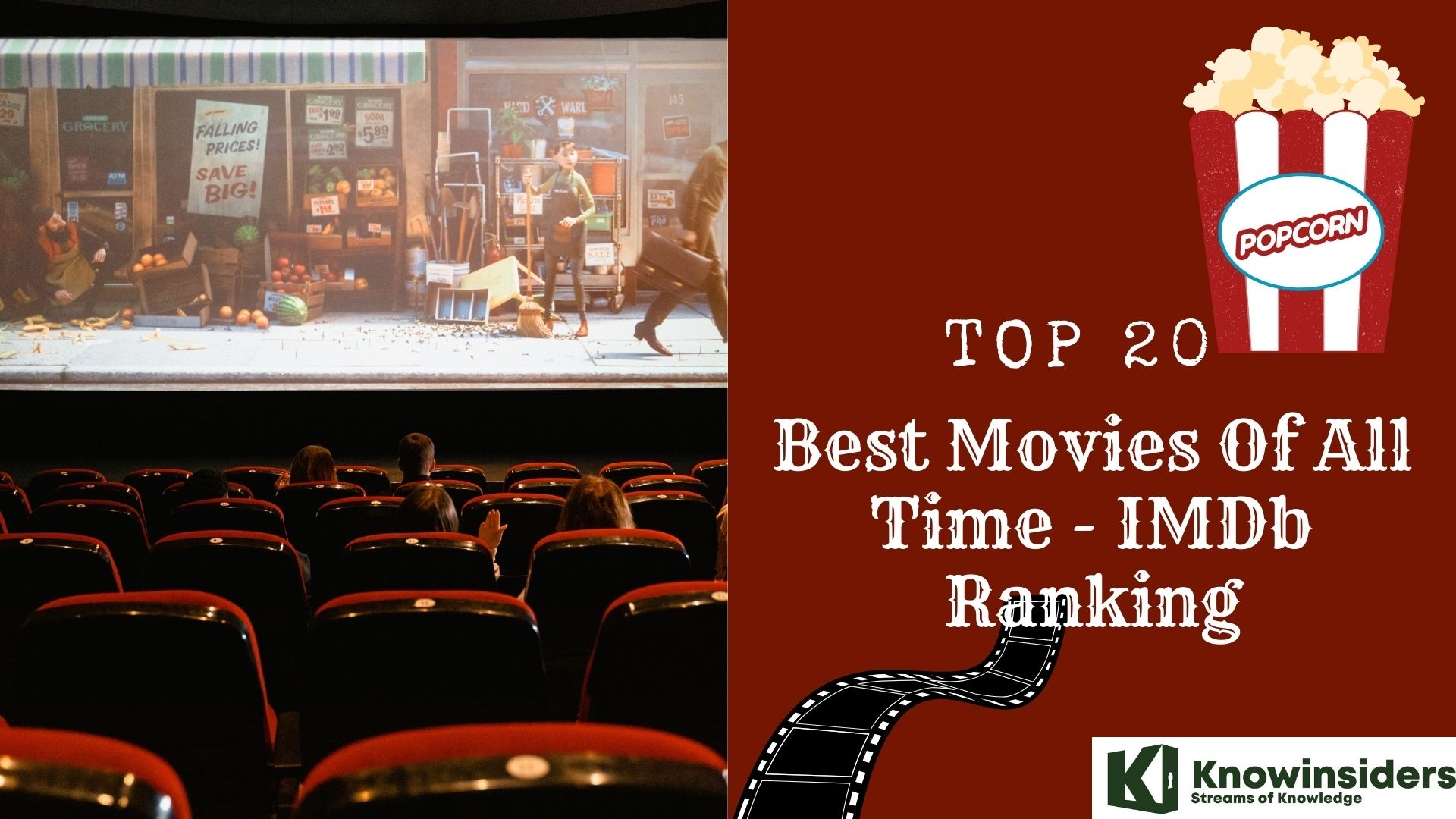 |
| Top 20 Best Movies Of All Time - IMDb Ranking |
IMDb remains one of the most popular movie information sites on the internet. Their top-rated movies list is compiled of films that have been rated by millions of viewers. While the list is always changing, the top films have remained quite unchanged for a number of years now. Take a look at these 20 best movies of all time with the highest votes according to IMDb.
List of top 20 best movies of all time – IMDb ranking
1. The Shawshank Redemption (1994) – 9.3/10
2. The Godfather (1972) – 9.2/10
3. The Dark Knight (2008) – 9.0/10
4. The Lord of the Rings: The Return of the King (2003) – 9.0/10
5. Schindler's List (1993) – 9.0/10
6. The Godfather: Part II (1974) – 9.0/10
7. 12 Angry Men (1957) – 9.0/10
8. Pulp Fiction (1994) – 8.9/10
9. Everything Everywhere All at Once (2022) – 8.8/10
10. Inception (2010) – 8.8/10
11. The Lord of the Rings: The Two Towers (2002) – 8.8/10
12. Fight Club (1999) – 8.8/10
13. The Lord of the Rings: The Fellowship of the Ring (2001) – 8.8/10
14. Forrest Gump (1994) – 8.8/10
15. The Good, the Bad and the Ugly (1966) – 8.8/10
16. The Matrix (1999) – 8.7/10
17. Goodfellas (1990) – 8.7/10
18. Star Wars: Episode V - The Empire Strikes Back (1980) – 8.7/10
19. One Flew Over the Cuckoo's Nest (1975) – 8.7/10
20. Interstellar (2014) – 8.6/10
What are the 20 best movies of all time, according to IMDb?
1. The Shawshank Redemption (1994)
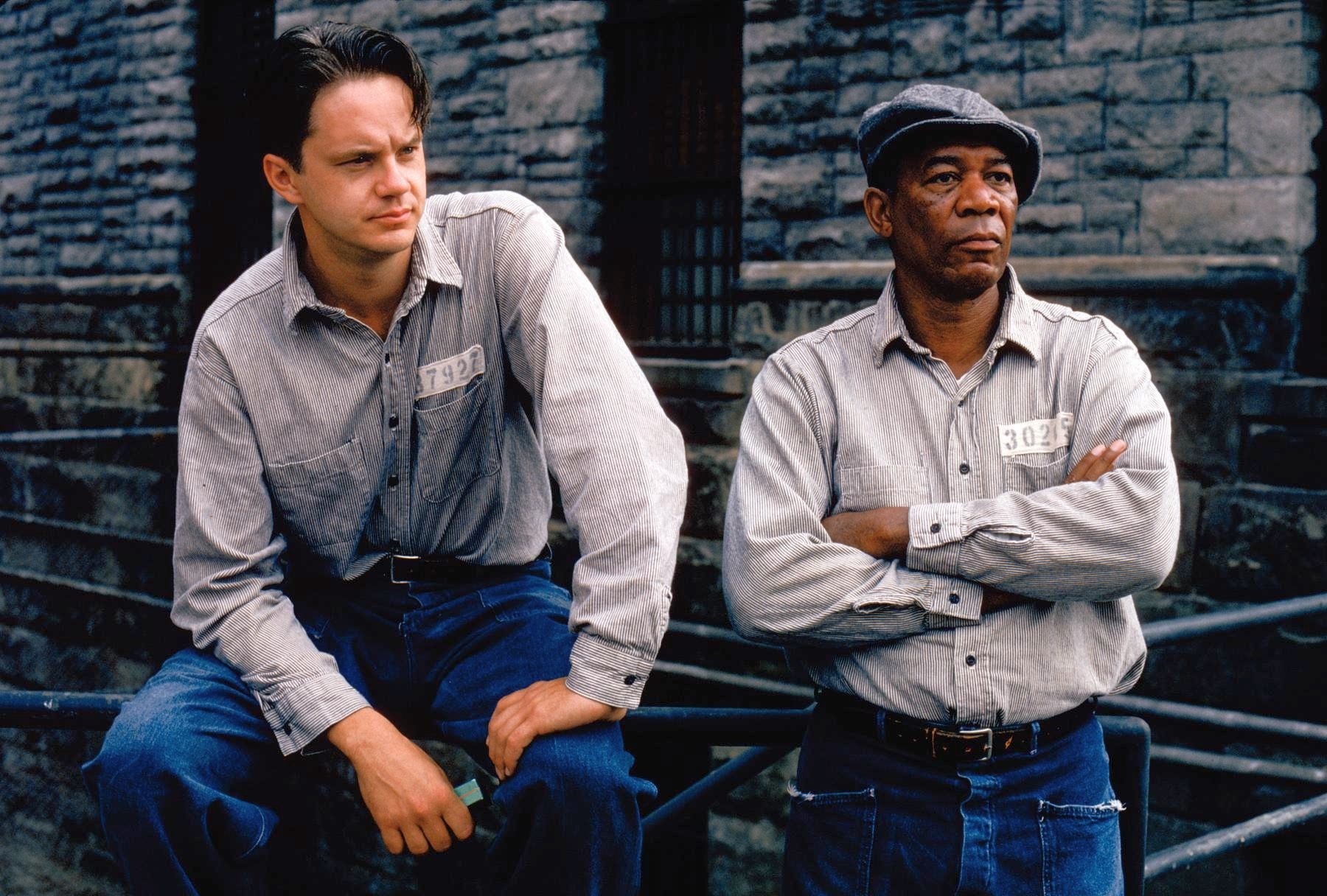 |
| Photo: IMDb |
The Shawshank Redemption is a 1994 American drama film written and directed by Frank Darabont, based on the 1982 Stephen King novella Rita Hayworth and Shawshank Redemption. It tells the story of banker Andy Dufresne (Tim Robbins), who is sentenced to life in Shawshank State Penitentiary for the murders of his wife and her lover, despite his claims of innocence. Over the following two decades, he befriends a fellow prisoner, contraband smuggler Ellis "Red" Redding (Morgan Freeman), and becomes instrumental in a money-laundering operation led by the prison warden Samuel Norton (Bob Gunton). William Sadler, Clancy Brown, Gil Bellows, and James Whitmore appear in supporting roles.
Darabont purchased the film rights to King's story in 1987, but development did not begin until five years later, when he wrote the script over an eight-week period. Two weeks after submitting his script to Castle Rock Entertainment, Darabont secured a $25 million budget to produce The Shawshank Redemption, which started pre-production in January 1993. While the film is set in Maine, principal photography took place from June to August 1993 almost entirely in Mansfield, Ohio, with the Ohio State Reformatory serving as the eponymous penitentiary. The project attracted many stars of the time for the role of Andy, including Tom Hanks, Tom Cruise, and Kevin Costner. Thomas Newman provided the film's score.
While The Shawshank Redemption received critical acclaim on its release, particularly for its story and the performances of Robbins and Freeman, it was a box-office disappointment, earning only $16 million during its initial theatrical run. Many reasons were cited for its failure at the time, including competition from films such as Pulp Fiction and Forrest Gump, the general unpopularity of prison films, its lack of female characters, and even the title, which was considered to be confusing for audiences. It went on to receive multiple award nominations, including seven Academy Award nominations, and a theatrical re-release that, combined with international takings, increased the film's box-office gross to $73.3 million.
Over 320,000 VHS rental copies were shipped throughout the United States, and on the strength of its award nominations and word of mouth, it became one of the top video rentals of 1995. The broadcast rights were acquired following the purchase of Castle Rock by Turner Broadcasting System, and it was shown regularly on the TNT network starting in 1997, further increasing its popularity. Decades after its release, the film was still broadcast regularly, and is popular in several countries, with audience members and celebrities citing it as a source of inspiration or naming it a favorite in various surveys, leading to its recognition as one of the most "beloved" films ever made. In 2015, the United States Library of Congress selected the film for preservation in the National Film Registry, finding it "culturally, historically, or aesthetically significant".
2. The Godfather (1972)
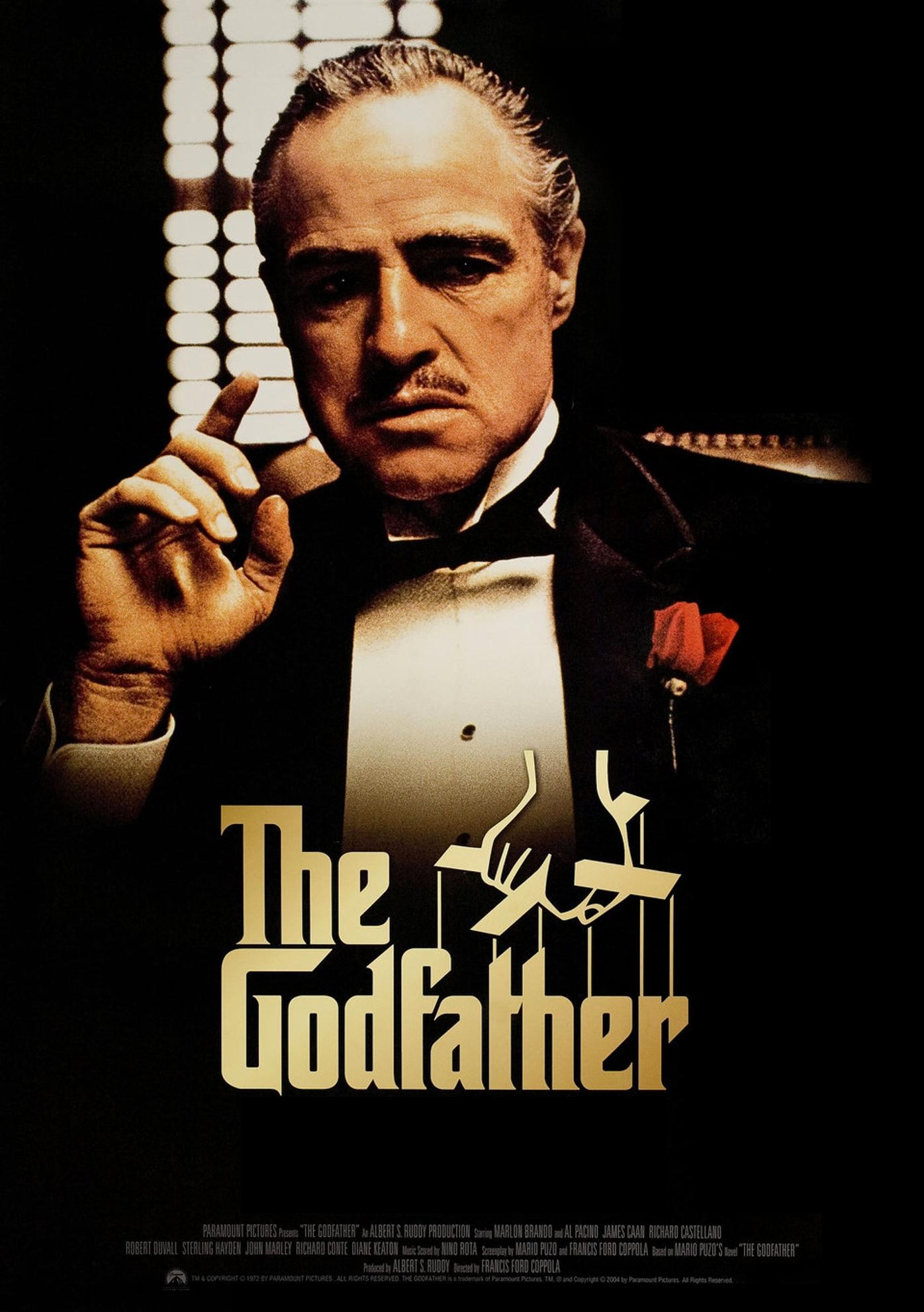 |
| Photo: Getty Images |
The Godfather is a 1972 American crime film directed by Francis Ford Coppola, who co-wrote the screenplay with Mario Puzo, based on Puzo's best-selling 1969 novel of the same name. The film stars Marlon Brando, Al Pacino, James Caan, Richard Castellano, Robert Duvall, Sterling Hayden, John Marley, Richard Conte, and Diane Keaton. It is the first installment in The Godfather trilogy. The story, spanning from 1945 to 1955, chronicles the Corleone family under patriarch Vito Corleone (Brando), focusing on the transformation of his youngest son, Michael Corleone (Pacino), from reluctant family outsider to ruthless mafia boss.
Paramount Pictures obtained the rights to the novel for the price of $80,000, before it gained popularity. Studio executives had trouble finding a director; the first few candidates turned down the position before Coppola signed on to direct the film but disagreement followed over casting several characters, in particular, Vito and Michael. Filming took place primarily on location around New York City and in Sicily, and was completed ahead of schedule. The musical score was composed principally by Nino Rota, with additional pieces by Carmine Coppola.
The Godfather premiered at the Loew's State Theatre on March 14, 1972, and was widely released in the United States on March 24, 1972. It was the highest-grossing film of 1972, and was for a time the highest-grossing film ever made, earning between $250 and $291 million at the box office. The film received universal acclaim from critics and audiences, with praise for the performances, particularly those of Brando and Pacino, the directing, screenplay, cinematography, editing, score, and portrayal of the mafia. The Godfather acted as a catalyst for the successful careers of Coppola, Pacino, and other relative newcomers in the cast and crew. The film also revitalized Brando's career, which had declined in the 1960s, and he went on to star in films such as Last Tango in Paris, Superman, and Apocalypse Now. At the 45th Academy Awards, the film won Best Picture, Best Actor (Brando), and Best Adapted Screenplay (for Puzo and Coppola). In addition, the seven other Oscar nominations included Pacino, Caan, and Duvall for Best Supporting Actor, and Coppola for Best Director.
The Godfather is regarded as one of the greatest and most influential films ever made, as well as a landmark of the gangster genre. It was selected for preservation in the U.S. National Film Registry of the Library of Congress in 1990, being deemed "culturally, historically, or aesthetically significant" and is ranked the second-greatest film in American cinema (behind Citizen Kane) by the American Film Institute. It was followed by sequels The Godfather Part II (1974) and The Godfather Part III (1990).
3. The Dark Knight (2008)
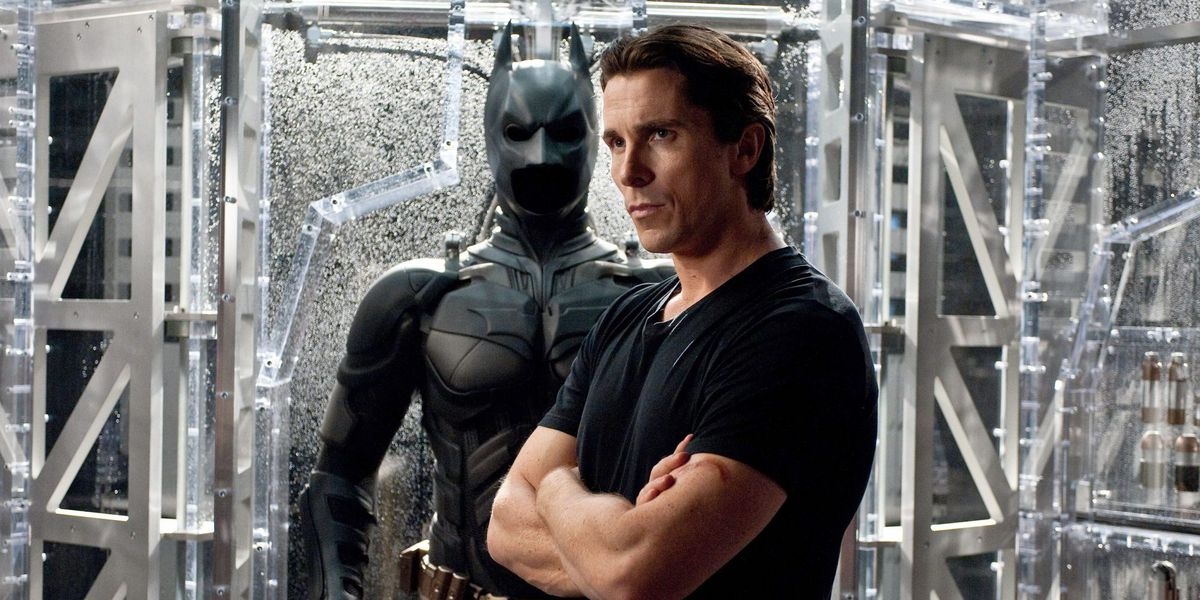 |
| Photo: Getty Images |
The Dark Knight is a 2008 superhero film directed, co-produced, and co-written by Christopher Nolan. Based on the DC Comics character Batman, the film is the second installment of Nolan's The Dark Knight Trilogy and a sequel to 2005's Batman Begins, starring Christian Bale and supported by Michael Caine, Heath Ledger, Gary Oldman, Aaron Eckhart, Maggie Gyllenhaal, and Morgan Freeman. In the film, Bruce Wayne / Batman (Bale), Police Lieutenant James Gordon (Oldman) and District Attorney Harvey Dent (Eckhart) form an alliance to dismantle organized crime in Gotham City, but are menaced by an anarchistic mastermind known as the Joker (Ledger), who seeks to undermine Batman's influence and throw the city into chaos.
Nolan's inspiration for the film was the Joker's comic book debut in 1940, the 1988 graphic novel The Killing Joke, and the 1996 series The Long Halloween, which retold Harvey Dent's origin. The "Dark Knight" nickname was first applied to Batman in Batman #1 (1940), in a story written by Bill Finger. The Dark Knight was filmed primarily in Chicago, as well as in several other locations in the United States, the United Kingdom, and Hong Kong. The film was the first mainstream feature to partially utilize IMAX 70 mm cameras, with Nolan using them for 28 minutes of the film, including the Joker's first appearance. Warner Bros. initially created a viral marketing campaign for The Dark Knight, developing promotional websites and trailers highlighting screenshots of Ledger as the Joker. Ledger died on January 22, 2008, some months after he completed filming and six months before the film's release from a toxic combination of prescription drugs, leading to intense attention from the press and movie-going public.
Considered one of the best films of its decade and one of the greatest and most influential films of all time, the film received critical acclaim for its screenplay, visual style, musical score, stunts, mature themes, performances (particularly Ledger's), cinematography, action sequences and direction. The film also set numerous records during its theatrical run.
4. The Lord of the Rings: The Return of the King (2003)
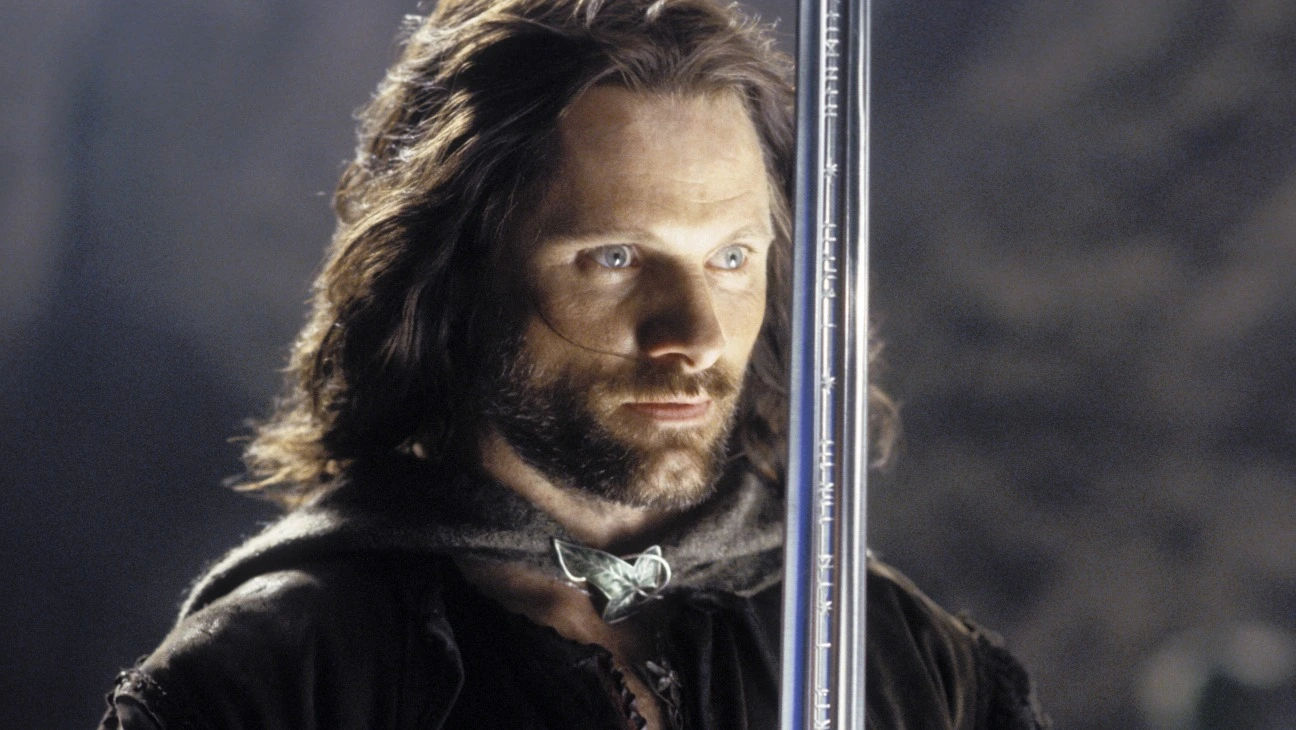 |
| Photo: PHOTOFEST |
The Lord of the Rings: The Return of the King is a 2003 epic fantasy adventure film directed by Peter Jackson, based on the third volume of J. R. R. Tolkien's The Lord of the Rings. The film is the final entry in the Lord of the Rings trilogy and was produced by Barrie M. Osborne, Jackson and Fran Walsh, from a screenplay by Walsh, Philippa Boyens and Jackson. Continuing the plot of The Two Towers, Frodo, Sam and Gollum are making their final way toward Mount Doom in Mordor in order to destroy the One Ring, unaware of Gollum's true intentions, while Merry, Pippin, Gandalf, Aragorn, Legolas, Gimli and the rest are joining forces together against Sauron and his legions in Minas Tirith. It was preceded by The Fellowship of the Ring (2001) and The Two Towers (2002).
The film features an ensemble cast including Elijah Wood, Ian McKellen, Liv Tyler, Viggo Mortensen, Sean Astin, Cate Blanchett, John Rhys-Davies, Bernard Hill, Billy Boyd, Dominic Monaghan, Orlando Bloom, Hugo Weaving, Miranda Otto, David Wenham, Karl Urban, John Noble, Andy Serkis, Ian Holm, and Sean Bean. The Return of the King was financed and distributed by American studio New Line Cinema, but filmed and edited entirely in Jackson's native New Zealand, concurrently with the other two parts of the trilogy. It premiered on 1 December 2003 at the Embassy Theatre in Wellington and was theatrically released on 17 December 2003 in the United States, and on 18 December 2003 in New Zealand.
The film was acclaimed by both critics and audiences, who considered it to be a landmark in filmmaking and the fantasy film genre, with praise for the visual effects, performances, action sequences, direction, screenplay, musical score, costume design and emotional depth. It grossed over $1.1 billion worldwide, making it the highest-grossing film of 2003 and the second highest-grossing film of all time at the time of its release, as well as the highest-grossing film released by New Line Cinema.
5. Schindler's List (1993)
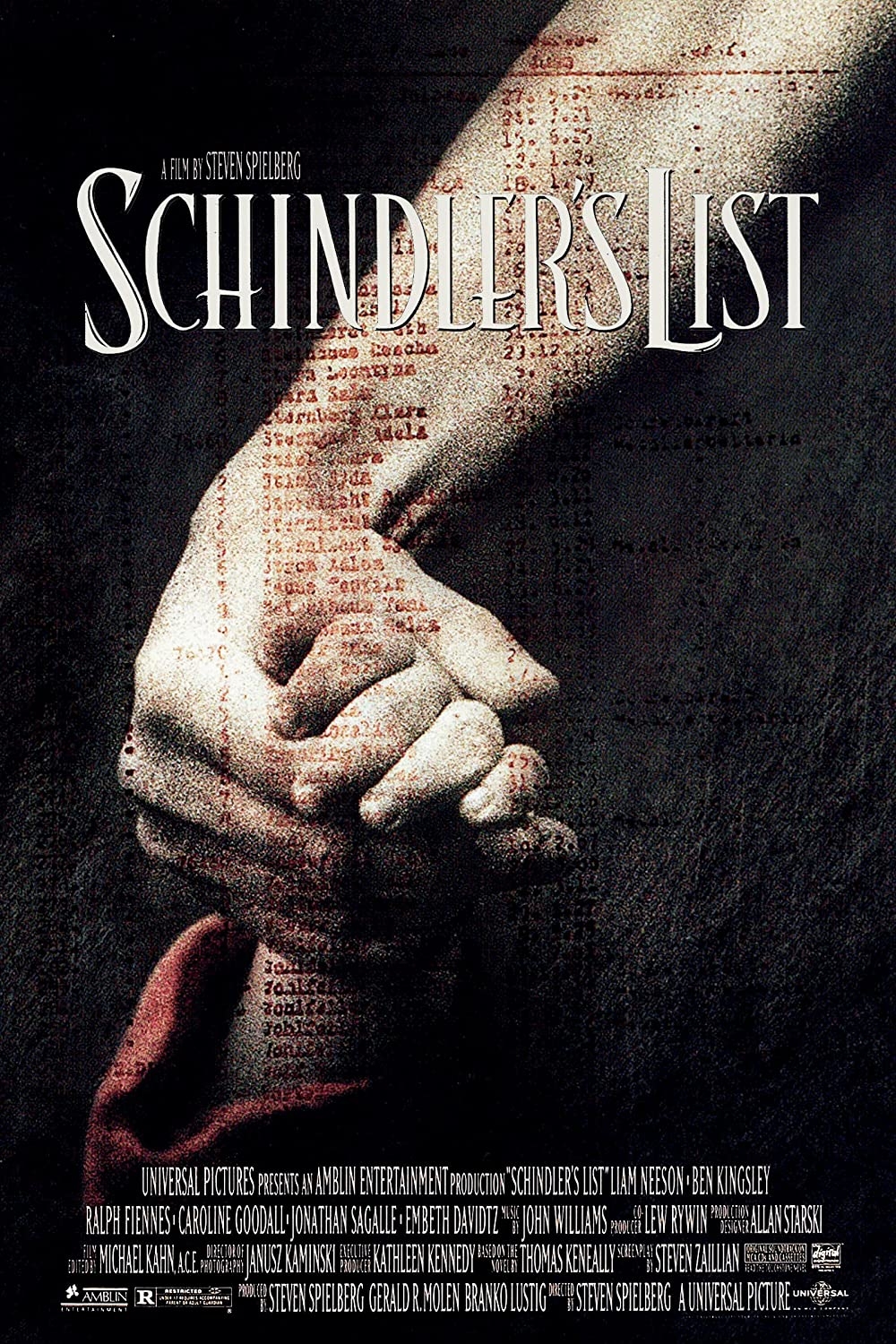 |
| Photo: IMDb |
Schindler's List is a 1993 American historical drama film directed and produced by Steven Spielberg and written by Steven Zaillian. It is based on the 1982 non-fiction novel Schindler's Ark by Australian novelist Thomas Keneally. The film follows Oskar Schindler, a German industrialist who saved more than a thousand mostly Polish-Jewish refugees from the Holocaust by employing them in his factories during World War II. It stars Liam Neeson as Schindler, Ralph Fiennes as SS officer Amon Göth, and Ben Kingsley as Schindler's Jewish accountant Itzhak Stern.
Ideas for a film about the Schindlerjuden (Schindler Jews) were proposed as early as 1963. Poldek Pfefferberg, one of the Schindlerjuden, made it his life's mission to tell Schindler's story. Spielberg became interested when executive Sidney Sheinberg sent him a book review of Schindler's Ark. Universal Pictures bought the rights to the novel, but Spielberg, unsure if he was ready to make a film about the Holocaust, tried to pass the project to several directors before deciding to direct it.
Principal photography took place in Kraków, Poland, over 72 days in 1993. Spielberg shot in black and white and approached the film as a documentary. Cinematographer Janusz Kamiński wanted to create a sense of timelessness. John Williams composed the score, and violinist Itzhak Perlman performed the main theme.
Schindler's List premiered on November 30, 1993, in Washington, D.C. and was released on December 15, 1993, in the United States. Often listed among the greatest films ever made, the film received universal critical acclaim for its tone, acting (especially Fiennes, Kingsley, and Neeson), atmosphere, and Spielberg's direction; it was also a box office success, earning $322 million worldwide on a $22 million budget. It was nominated for twelve Academy Awards, and won seven, including Best Picture, Best Director, Best Adapted Screenplay, and Best Original Score. The film won numerous other awards, including seven BAFTAs and three Golden Globe Awards. In 2007, the American Film Institute ranked Schindler's List 8th on its list of the 100 best American films of all time. The film was designated as "culturally, historically or aesthetically significant" by the Library of Congress in 2004 and selected for preservation in the United States National Film Registry.
6. The Godfather: Part II (1974)
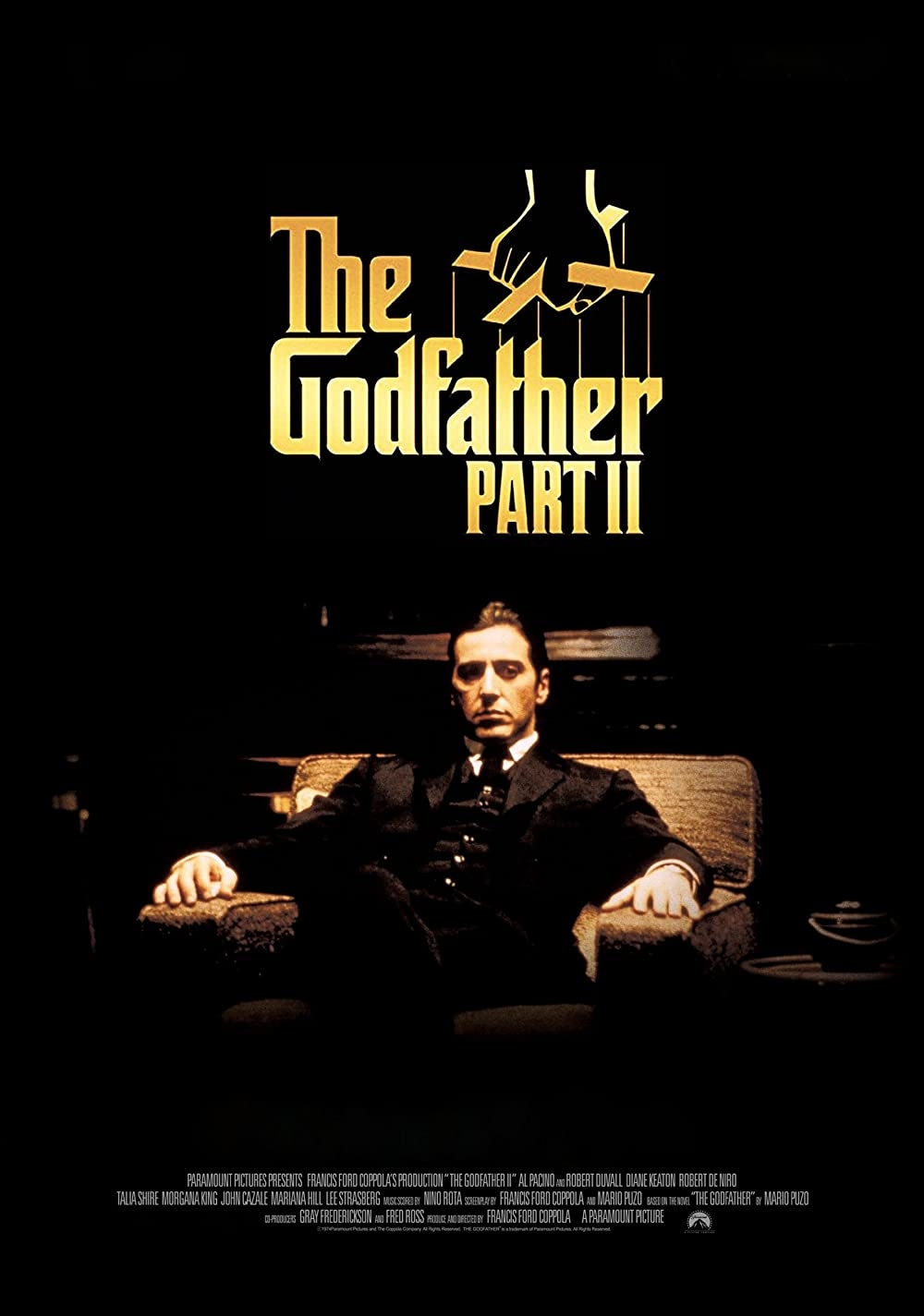 |
| Photo: IMDb |
The Godfather Part II is a 1974 American epic crime film produced and directed by Francis Ford Coppola. The film is partially based on the 1969 novel The Godfather by Mario Puzo, who co-wrote the screenplay with Coppola. Part II serves as both a sequel and a prequel to the 1972 film The Godfather, presenting parallel dramas: one picks up the 1958 story of Michael Corleone (Al Pacino), the new Don of the Corleone family, protecting the family business in the aftermath of an attempt on his life; the prequel covers the journey of his father, Vito Corleone (Robert De Niro), from his Sicilian childhood to the founding of his family enterprise in New York City. The ensemble cast also features Robert Duvall, Diane Keaton, Talia Shire, Morgana King, John Cazale, Mariana Hill, and Lee Strasberg.
Following the success of the first film, Paramount Pictures began developing a follow-up, with many of the cast and crew returning. Coppola, who was given more creative control, had wanted to make both a sequel and a prequel to The Godfather that would tell the story of the rise of Vito and the fall of Michael. Principal photography began in October 1973 and wrapped up in June 1974. The Godfather Part II premiered in New York City on December 12, 1974, and was released in the United States on December 20, 1974, receiving divided reviews from critics; its reputation, however, improved rapidly, and it soon became the subject of critical re-appraisal. It grossed $48 million in the United States and Canada and up to $93 million worldwide on a $13 million budget. The film was nominated for eleven Academy Awards, and became the first sequel to win Best Picture. Its six Oscar wins also included Best Director for Coppola, Best Supporting Actor for De Niro and Best Adapted Screenplay for Coppola and Puzo. Pacino won Best Actor at the BAFTA's and was nominated at the Oscar's.
Like its predecessor, Part II remains a highly influential film, especially in the gangster genre. It is considered to be one of the greatest films of all time, as well as the rare example of a sequel superior to its predecessor. In 1997, the American Film Institute ranked it as the 32nd-greatest film in American film history and it retained this position 10 years later. It was selected for preservation in the U.S. National Film Registry of the Library of Congress in 1993, being deemed "culturally, historically, or aesthetically significant". The Godfather Part III, the final installment in the trilogy, was released in 1990.
7. 12 Angry Men (1957)
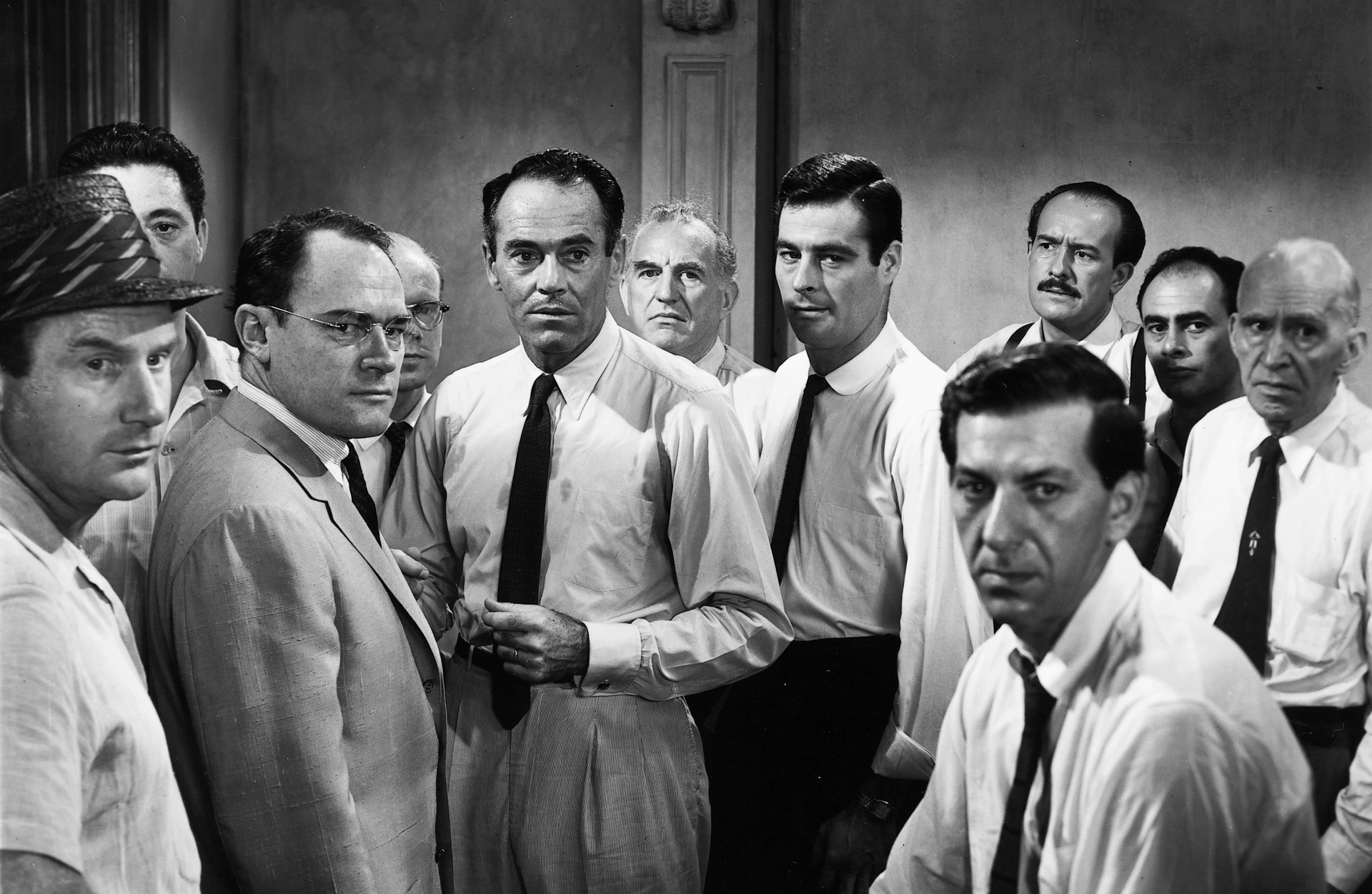 |
| Photo: United Artists |
In form, "12 Angry Men" is a courtroom drama. In purpose, it's a crash course in those passages of the Constitution that promise defendants a fair trial and the presumption of innocence. It has a kind of stark simplicity: Apart from a brief setup and a briefer epilogue, the entire film takes place within a small New York City jury room, on "the hottest day of the year," as 12 men debate the fate of a young defendant charged with murdering his father.
The film shows us nothing of the trial itself except for the judge's perfunctory, almost bored, charge to the jury. His tone of voice indicates the verdict is a foregone conclusion. We hear neither prosecutor nor defense attorney, and learn of the evidence only second-hand, as the jurors debate it. Most courtroom movies feel it necessary to end with a clear-cut verdict. But "12 Angry Men" never states whether the defendant is innocent or guilty. It is about whether the jury has a reasonable doubt about his guilt.
The principle of reasonable doubt, the belief that a defendant is innocent until proven guilty, is one of the most enlightened elements of our Constitution, although many Americans have had difficulty in accepting it. "It's an open and shut case," snaps Juror No. 3 (Lee J. Cobb) as the jury first gathers in their claustrophobic little room. When the first ballot is taken, 10 of his fellow jurors agree, and there is only one holdout--Juror No. 8 (Henry Fonda).
This is a film where tension comes from personality conflict, dialogue and body language, not action; where the defendant has been glimpsed only in a single brief shot; where logic, emotion and prejudice struggle to control the field. It is a masterpiece of stylized realism--the style coming in the way the photography and editing comment on the bare bones of the content. Released in 1957, when Technicolor and lush production values were common, "12 Angry Men" was lean and mean. It got ecstatic reviews and a spread in Life magazine, but was a disappointment at the box office. Over the years it has found a constituency, however, and in a 2002 Internet Movie Database poll it was listed 23rd among the best films of all time.
The story is based on a television play by Reginald Rose, later made into a movie by Sidney Lumet, with Rose and Henry Fonda acting as co-producers and putting up their own money to finance it. It was Lumet's first feature, although he was much experienced in TV drama, and the cinematography was by the veteran Boris Kaufman, whose credits ("On the Waterfront," "Long Day's Journey into Night") show a skill for tightening the tension in dialogue exchanges.
In a length of only 95 minutes (it sometimes feels as if the movie is shot in real time), the jurors are all defined in terms of their personalities, backgrounds, occupations, prejudices and emotional tilts. Evidence is debated so completely that we feel we know as much as the jury does, especially about the old man who says he heard the murder and saw the defendant fleeing, and the lady across the street who says she saw it happen through the windows of a moving L train.
8. Pulp Fiction (1994)
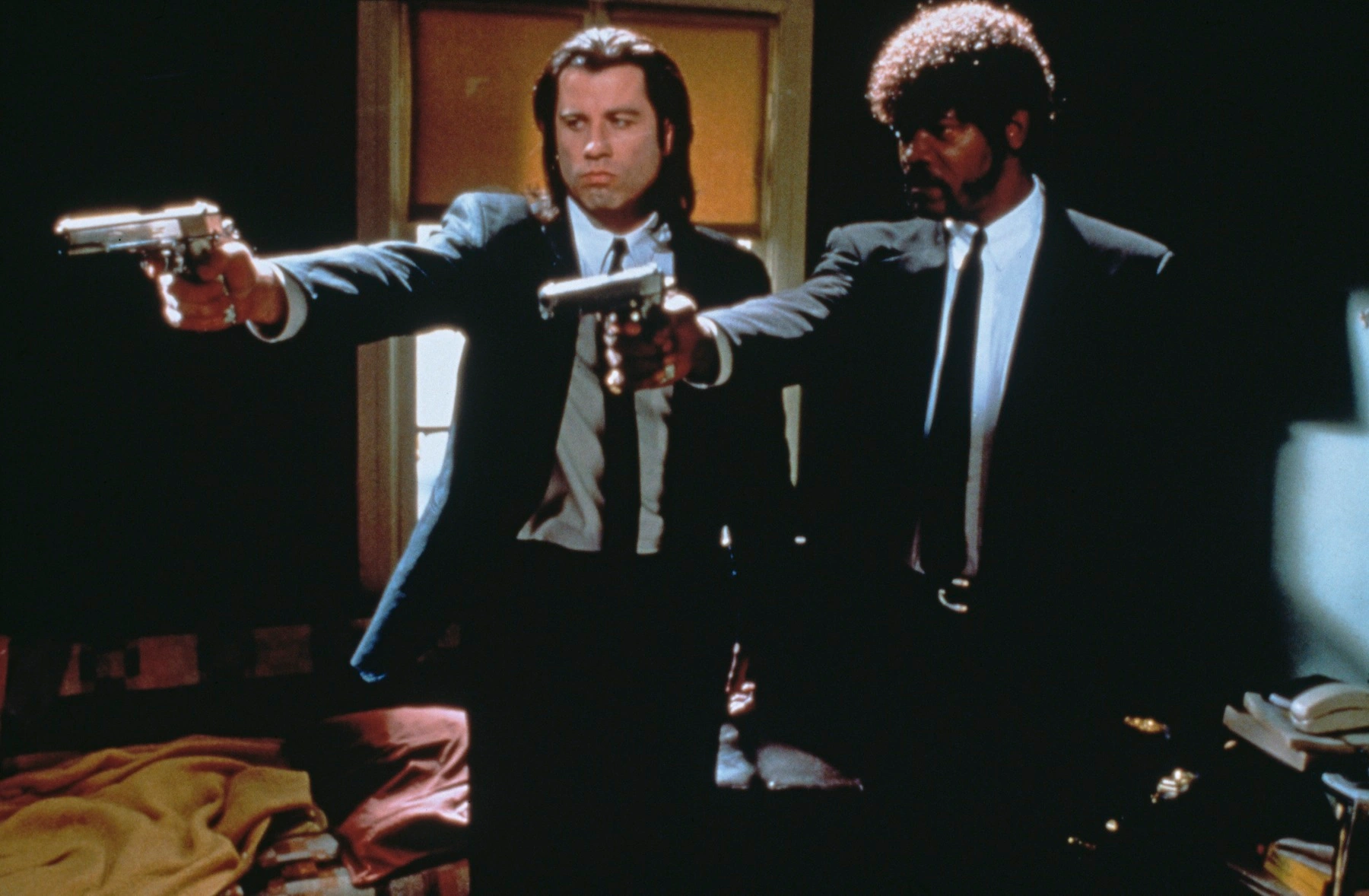 |
| Photo: Getty Images |
Pulp Fiction is a 1994 American black comedy crime film written and directed by Quentin Tarantino, who conceived it with Roger Avary. Starring John Travolta, Samuel L. Jackson, Bruce Willis, Tim Roth, Ving Rhames, and Uma Thurman, it tells several stories of crime in Los Angeles. The title refers to the pulp magazines and hardboiled crime novels popular during the mid-20th century, known for their graphic violence and punchy dialogue.
Tarantino wrote Pulp Fiction in 1992 and 1993, incorporating scenes that Avary originally wrote for True Romance (1993). Its plot occurs out of chronological order. The film is also self-referential from its opening moments, beginning with a title card that gives two dictionary definitions of "pulp". Considerable screen time is devoted to monologues and casual conversations with eclectic dialogue revealing each character's perspectives on several subjects, and the film features an ironic combination of humor and strong violence. TriStar Pictures reportedly turned down the script as "too demented". Then Miramax co-chairman Harvey Weinstein was enthralled, however, and the film became the first that Miramax fully financed.
Pulp Fiction won the Palme d'Or at the 1994 Cannes Film Festival, and was a major critical and commercial success. It was nominated for seven awards at the 67th Academy Awards, including Best Picture, and won Best Original Screenplay; it earned Travolta, Jackson, and Thurman Academy Award nominations and boosted their careers. Its development, marketing, distribution, and profitability had a sweeping effect on independent cinema.
Pulp Fiction is widely regarded as Tarantino's masterpiece, with particular praise for its screenwriting. The self-reflexivity, unconventional structure, and extensive homage and pastiche have led critics to describe it as a touchstone of postmodern film. It is often considered a cultural watershed, influencing films and other media that adopted elements of its style. The cast was also widely praised, with Travolta, Thurman and Jackson earning particular acclaim. In 2008, Entertainment Weekly named it the best film since 1983 and it has appeared on many critics' lists of the greatest films ever made. In 2013, Pulp Fiction was selected for preservation in the United States National Film Registry by the Library of Congress as "culturally, historically, or aesthetically significant".
9. Everything Everywhere All at Once (2022)
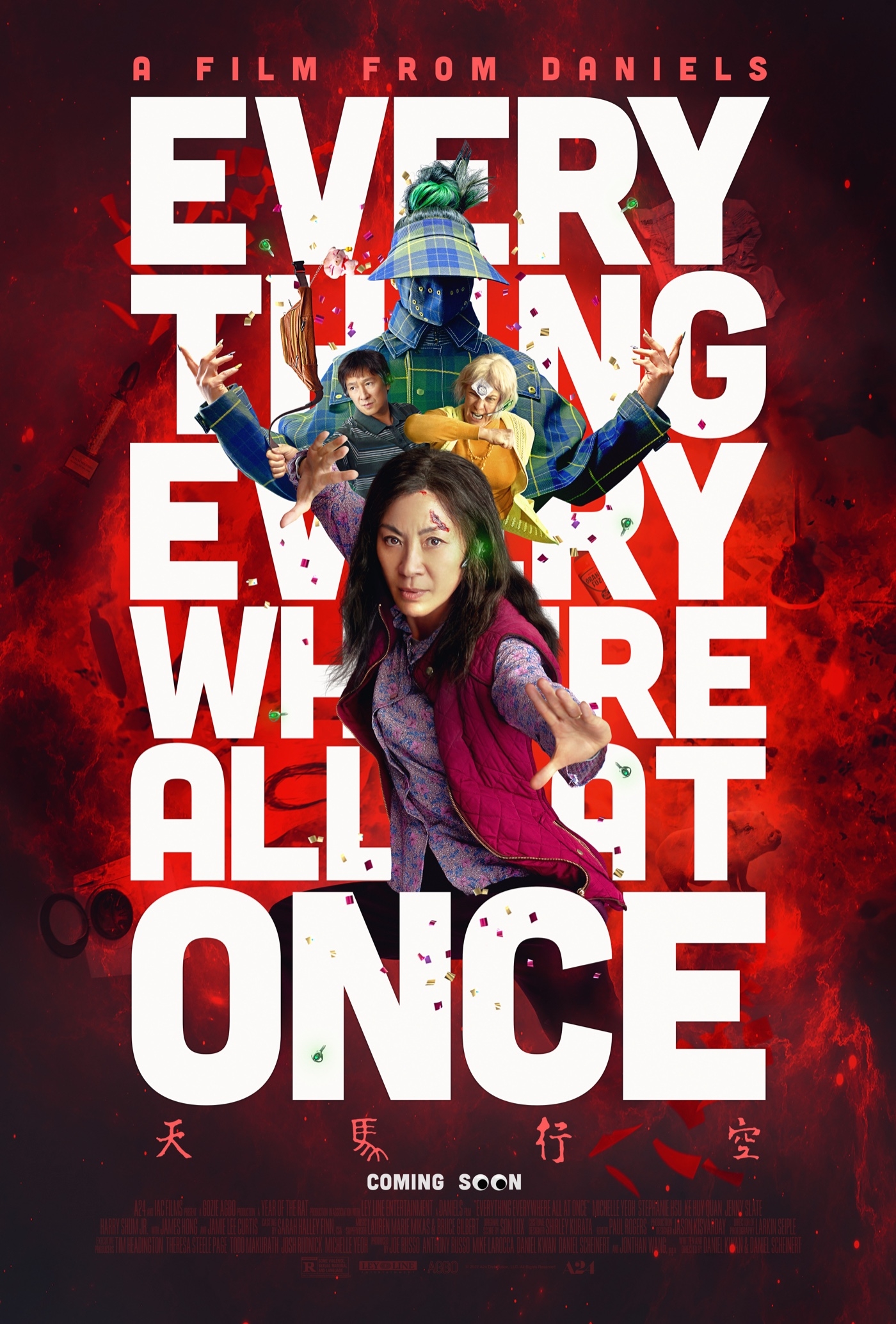 |
| everythingeverywhereallatonce.movie |
Everything Everywhere All at Once is a 2022 American absurdist comedy-drama film written and directed by Dan Kwan and Daniel Scheinert (collectively known as "Daniels"). The film stars Michelle Yeoh, Stephanie Hsu, Ke Huy Quan, Jenny Slate, Harry Shum Jr., James Hong, and Jamie Lee Curtis. The plot follows a Chinese-American woman (Yeoh) being audited by the Internal Revenue Service who discovers that she must connect with parallel universe versions of herself to prevent a powerful being from causing the destruction of them all. The film has been described as a "swirl of genre anarchy", featuring elements of martial arts films, science fiction, fantasy, action, and animation.
Kwan and Scheinert researched the concept of the multiverse as far back as 2010, and began writing the screenplay as early as 2016. Originally written for Jackie Chan, the lead role was later reworked and offered to Yeoh. Principal photography began in January 2020, and wrapped in March prior to the onset of the COVID-19 pandemic in the United States. The film features music composed by Son Lux, including collaborations with musicians Mitski, David Byrne, and André 3000.
Everything Everywhere All at Once premiered at South by Southwest on March 11, 2022, and began a limited theatrical release in the United States on March 25, 2022, before a wide release on April 8, 2022, by A24; it has grossed over $47 million worldwide. The film was acclaimed by critics and audiences alike, who lauded its lighthearted tone, imagination, direction, the performances of the cast (particularly Yeoh and Quan), and its compassionate handling of themes such as existentialism and nihilism.
Consequence's Clint Worthington wrote that, "for all its dadaist absurdism and blink-if-you-miss-it pace, Daniels weaves the chaotic possibilities into the multiverse into a cohesive story about the aches and pains of the road not traveled, and the need to carve out your own meaning in a meaningless universe." Describing Jobu Tupaki's modus operandi, Worthington notes "the living contradiction that is the everything bagel: if you put everything on a bagel, what more is left? And if you've experienced everything that the multiverse can offer, what's the point of any of it?"
Co-director Daniel Kwan stated that the everything bagel concept "did two things. It allowed us to talk about nihilism without being too eye roll-y. And it creates a MacGuffin: a doomsday device. If in the first half of the movie, people think that the bagel is here to destroy the world, and in the second half you realize it's a depressed person trying to destroy themselves; it just takes everything about action movies and turns it into something more personal."
10. Inception (2010)
 |
| Photo: IMDb |
In a summer of remakes, reboots and sequels comes Inception, easily the most original movie idea in ages.
Now “original” doesn’t mean its chases, cliffhangers, shoot-outs, skullduggery and last-minute rescues. Movies have trafficked in those things forever. What’s new here is how writer-director Christopher Nolan repackages all this with a science-fiction concept that allows his characters to chase and shoot across multiple levels of reality.
This is, in some ways, a con-game movie, only the action takes place entirely within the characters’ minds while they dream.
Following up on such ingenious and intriguing films as The Dark Knight and Memento, Nolan has outdone himself. “Inception” puts him not only at the top of the heap of sci-fi all-stars, but it also should put this Warner Bros. release near or at the top of the summer movies. It’s very hard to see how a film that plays so winningly to so many demographics would not be a worldwide hit.
Not that the film doesn’t have its antecedents. Dreamscape (1984) featured a man who could enter and manipulate dreams, and, of course, in The Matrix (1999) human beings and machines battled on various reality levels created by artificial intelligence.
In Inception, Nolan imagines a new kind of corporate espionage wherein a thief enters a person’s brain during the dream state to steal ideas. This is done by an entire team of “extractors” who design the architecture of the dreams, forge identities within the dream and even pharmacologically help several people to share these dreams.
Leonardo DiCaprio plays Dom Cobb, a master extractor, who is for what initially are vague reasons on the run and cannot return home to his children in the States. Then along comes a powerful businessman, Saito (Ken Watanabe), who offers Dom his life back — if he’ll perform a special job.
Saito wants Dom to do the impossible: Instead of stealing an idea, he wants Dom to plant one, an idea that will cause the mark, Robert Fischer (Cillian Murphy), to break up his father’s multibillion-dollar corporation for “emotional” reasons.
Meanwhile, you meet the other team members — Arthur (Joseph Gordon-Levitt), Dom’s longtime point man; Eames (Tom Hardy), the forger; Yusuf (Dileep Rao), the chemist; and Dom’s father-in-law (Michael Caine), who is not on the team but the professor who taught Dom to share dreams.
Dom’s late wife, Mal (Marion Cotillard), haunts his own dreamworld like a kind of Mata Hari, intent on messing with his mind if not staking a claim to his very life. He doesn’t let on about this, but Dom’s new architect, Ariadne (Ellen Page), figures it out — which makes her realize how dangerous it is to share dreams with Dom.
A good deal of the first hour is spent, essentially, selling the audience on this sci-fi idea. As you witness an extraction that fails and then Dom’s recruitment of his new team around the world, the movie lays out all the hows, whys, whos and what-the-hells behind “extractions.”
If you don’t follow all this, join the club. It will perhaps take multiple viewings of these multiple dream states to extract all the logic and regulations. (At least that’s what the filmmakers hope.)
Something else might come more easily on subsequent viewings: With incredibly tense situations suspended across so many dreams within dreams, all that restless energy might induce a kind of reverse stress in audiences, producing not quite tedium, but you may want to shout, “C’mon, let’s get on with it.”
This is especially true when the hectic action in one dream, a van rolling down a hill with its dreamers aboard, causes a hotel corridor to roll in another, producing a weightless state in the characters. Even Fred Astaire didn’t dance on the ceiling as much as these guys do.
11. The Lord of the Rings: The Two Towers (2002)
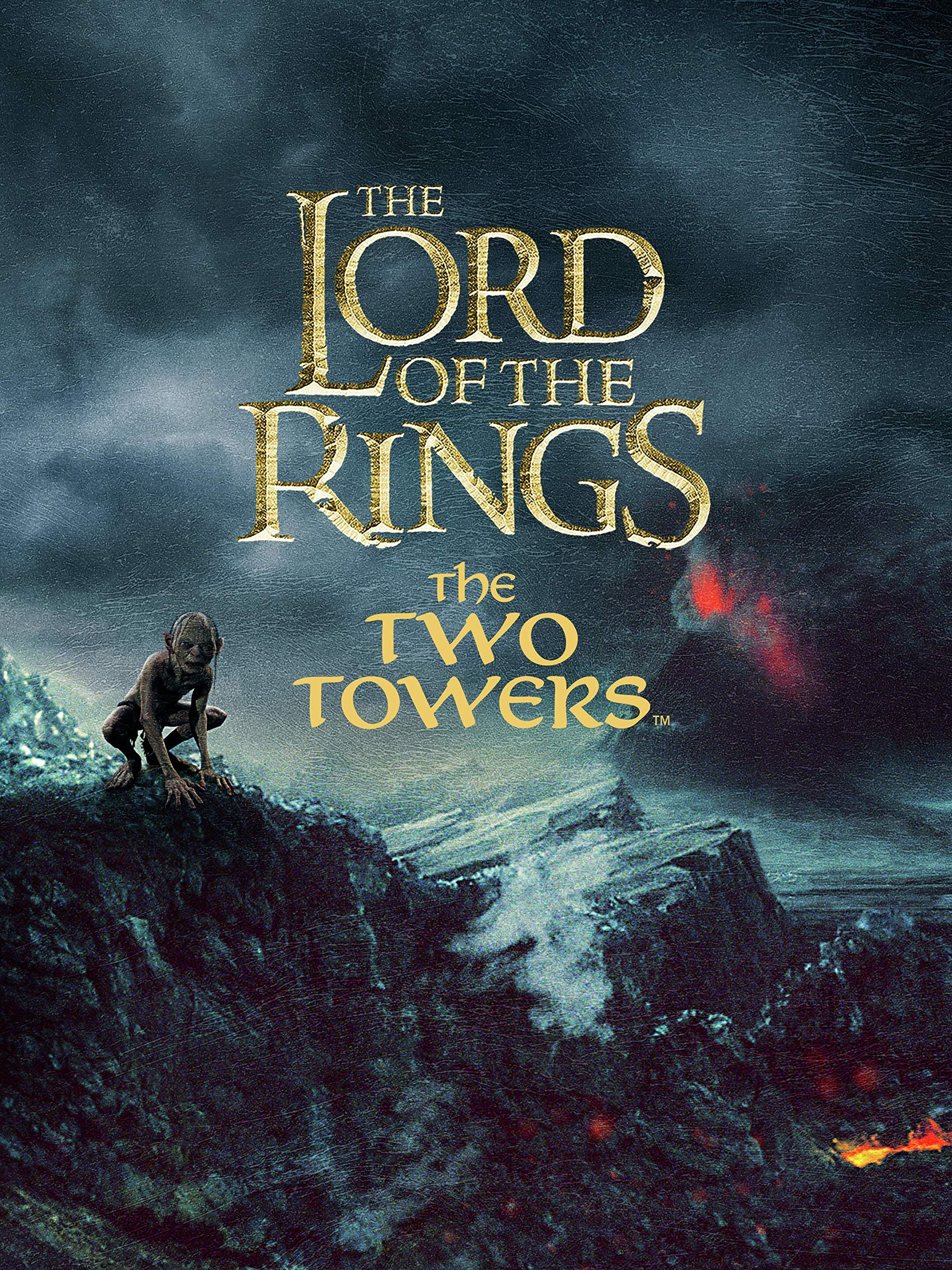 |
| Photo: Amazon |
The Lord of the Rings: The Two Towers is a 2002 epic fantasy adventure film directed by Peter Jackson, based on the second volume of J. R. R. Tolkien's The Lord of the Rings. The film is the second instalment in the Lord of the Rings trilogy and was produced by Barrie M. Osborne, Fran Walsh and Jackson, from a screenplay by Walsh, Philippa Boyens, Stephen Sinclair and Jackson. The film features an ensemble cast including Elijah Wood, Ian McKellen, Liv Tyler, Viggo Mortensen, Sean Astin, Cate Blanchett, John Rhys-Davies, Bernard Hill, Christopher Lee, Billy Boyd, Dominic Monaghan, Orlando Bloom, Hugo Weaving, Miranda Otto, David Wenham, Brad Dourif, Karl Urban and Andy Serkis. It was preceded by The Fellowship of the Ring (2001) and followed by The Return of the King (2003).
Continuing the plot of The Fellowship of the Ring, the film intercuts three storylines. Frodo and Sam continue their journey towards Mordor to destroy the One Ring, meeting and joined by Gollum, the ring's former keeper. Aragorn, Legolas, and Gimli come to the war-torn nation of Rohan and are reunited with the resurrected Gandalf, before fighting against the legions of the treacherous wizard Saruman at the Battle of Helm's Deep. Merry and Pippin escape capture, meet Treebeard the Ent, and help to plan an attack on Isengard, fortress of Saruman.
The Two Towers was financed and distributed by American studio New Line Cinema, but filmed and edited entirely in Jackson's native New Zealand, concurrently with the other two parts of the trilogy. It premiered on 5 December 2002 at the Ziegfeld Theatre in New York City and was theatrically released on 18 December 2002 in the United States, and on 19 December 2002 in New Zealand. The film was acclaimed by both critics and audiences, who considered it to be a landmark in filmmaking and an achievement in the fantasy film genre. It received praise for its direction, action sequences, performances, musical score, and CGI, particularly for Gollum. It grossed $936 million worldwide, making it the highest-grossing film of 2002 and the third highest-grossing film of all time at the time of its release, behind Harry Potter and the Sorcerer's Stone and Titanic. Following subsequent reissues, it has, as of 2021, grossed over $947 million.
12. Fight Club (1999)
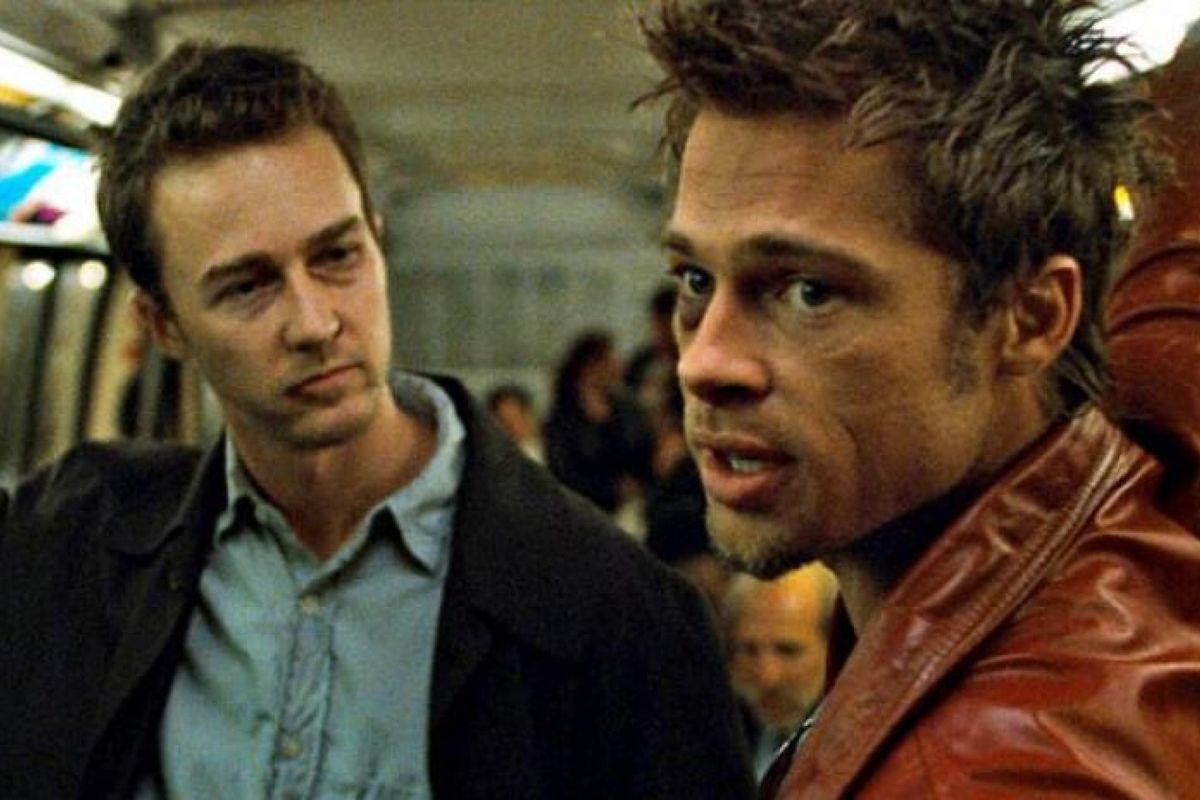 |
| Photo: Twentieth Century Fox |
Fight Club is a 1999 American film directed by David Fincher and starring Brad Pitt, Edward Norton, and Helena Bonham Carter. It is based on the 1996 novel of the same name by Chuck Palahniuk. Norton plays the unnamed narrator, who is discontented with his white-collar job. He forms a "fight club" with soap salesman Tyler Durden (Pitt), and becomes embroiled in a relationship with a destitute woman, Marla Singer (Bonham Carter).
Palahniuk's novel was optioned by Fox 2000 Pictures producer Laura Ziskin, who hired Jim Uhls to write the film adaptation. Fincher was selected because of his enthusiasm for the story. He developed the script with Uhls and sought screenwriting advice from the cast and others in the film industry. It was filmed in and around Los Angeles from July to December 1998. He and the cast compared the film to Rebel Without a Cause (1955) and The Graduate (1967), with a theme of conflict between Generation X and the value system of advertising.
Studio executives did not like the film, and they restructured Fincher's intended marketing campaign to try to reduce anticipated losses. Fight Club failed to meet the studio's expectations at the box office, and received polarized reactions from critics. It was ranked as one of the most controversial and talked-about films of 1999. The film later found commercial success with its home video release, establishing Fight Club as a cult classic and causing media to revisit the film. In 2009, on the tenth anniversary of the film's release, The New York Times dubbed it the "defining cult movie of our time."
13. The Lord of the Rings: The Fellowship of the Ring (2001)
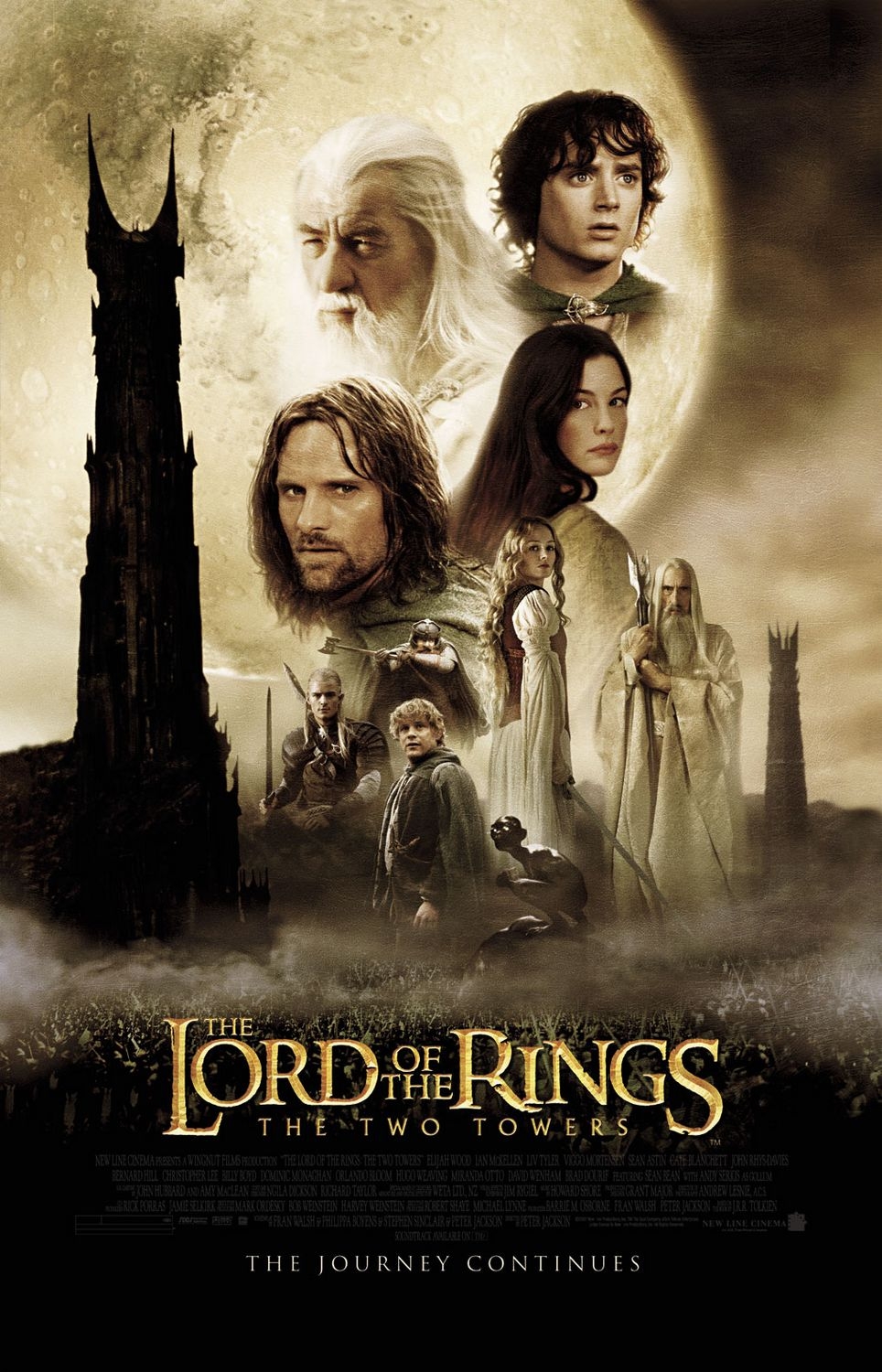 |
| Photo: IMDb |
The Lord of the Rings: The Fellowship of the Ring is a 2001 epic fantasy adventure film directed by Peter Jackson, based on the 1954 novel The Fellowship of the Ring, the first volume of J. R. R. Tolkien's The Lord of the Rings. The film is the first installment in the Lord of the Rings trilogy. It was produced by Barrie M. Osborne, Jackson, Fran Walsh and Tim Sanders, and written by Walsh, Philippa Boyens and Jackson. The film features an ensemble cast including Elijah Wood, Ian McKellen, Liv Tyler, Viggo Mortensen, Sean Astin, Cate Blanchett, John Rhys-Davies, Billy Boyd, Dominic Monaghan, Orlando Bloom, Christopher Lee, Hugo Weaving, Sean Bean, Ian Holm, and Andy Serkis. It was followed in 2002 by The Two Towers and in 2003 by The Return of the King.
Set in Middle-earth, the story tells of the Dark Lord Sauron, who seeks the One Ring, which contains part of his soul, in order to return to power. The Ring has found its way to the young hobbit Frodo Baggins. The fate of Middle-earth hangs in the balance as Frodo and eight companions (who form the Fellowship of the Ring) begin their journey to Mount Doom in the land of Mordor, the only place where the Ring can be destroyed.
The Fellowship of the Ring was cofinanced and distributed by American studio New Line Cinema, but filmed and edited entirely in Jackson's native New Zealand, concurrently with the other two parts of the trilogy. It premiered on 10 December 2001 at the Odeon Leicester Square in London and was theatrically released worldwide on 19 December 2001. The film was acclaimed by critics and fans alike, who considered it to be a landmark in filmmaking and an achievement in the fantasy film genre. It received praise for its visual effects, performances, Jackson's direction, screenplay, musical score, and faithfulness to the source material. It grossed $880 million worldwide in its initial release, making it the second highest-grossing film of 2001 and the fifth highest-grossing film of all time at the time of its release. Following subsequent reissues, it has as of 2021 grossed over $897 million.
14. Forrest Gump (1994)
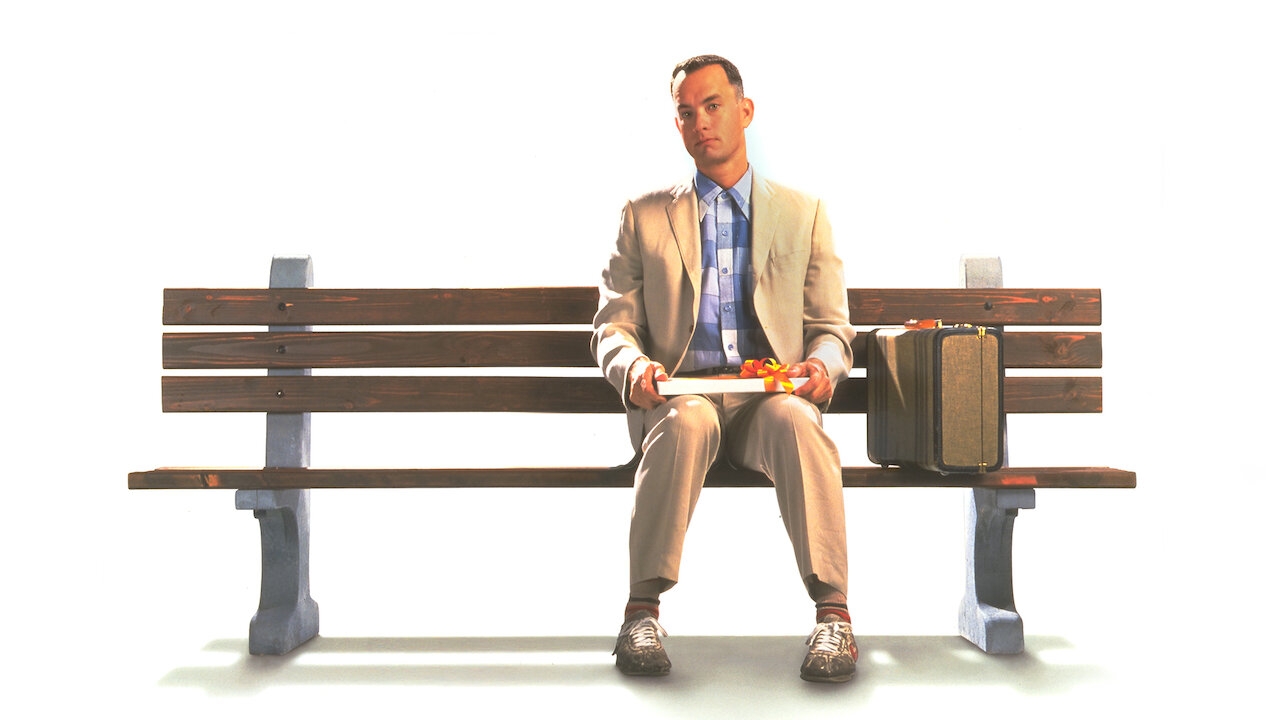 |
| Photo: Netflix |
Forrest Gump is a 1994 American comedy-drama film directed by Robert Zemeckis and written by Eric Roth. It is based on the 1986 novel of the same name by Winston Groom and stars Tom Hanks, Robin Wright, Gary Sinise, Mykelti Williamson and Sally Field. The story depicts several decades in the life of Forrest Gump (Hanks), a slow-witted and kindhearted man from Alabama who witnesses and unwittingly influences several defining historical events in the 20th century United States. The film differs substantially from the novel.
Principal photography took place between August and December 1993, mainly in Georgia, North Carolina and South Carolina. Extensive visual effects were used to incorporate Hanks into archived footage and to develop other scenes. The soundtrack features songs reflecting the different periods seen in the film.
Forrest Gump was released in the United States on July 6, 1994, and received generally favorable reviews for Zemeckis's direction, performances (particularly those of Hanks and Sinise), visual effects, music, and screenplay. The film was an enormous success at the box office; it became the top-grossing film in America released that year and earned over US$678.2 million worldwide during its theatrical run, making it the second-highest-grossing film of 1994, behind The Lion King. The soundtrack sold over 12 million copies. Forrest Gump won six Academy Awards: Best Picture, Best Director, Best Actor for Hanks, Best Adapted Screenplay, Best Visual Effects, and Best Film Editing. It received many award nominations, including Golden Globes, British Academy Film Awards and Screen Actors Guild Awards.
Varying interpretations have been made of the protagonist and the film's political symbolism. In 2011, the Library of Congress selected the film for preservation in the United States National Film Registry as being "culturally, historically, or aesthetically significant".
15. The Good, the Bad and the Ugly (1966)
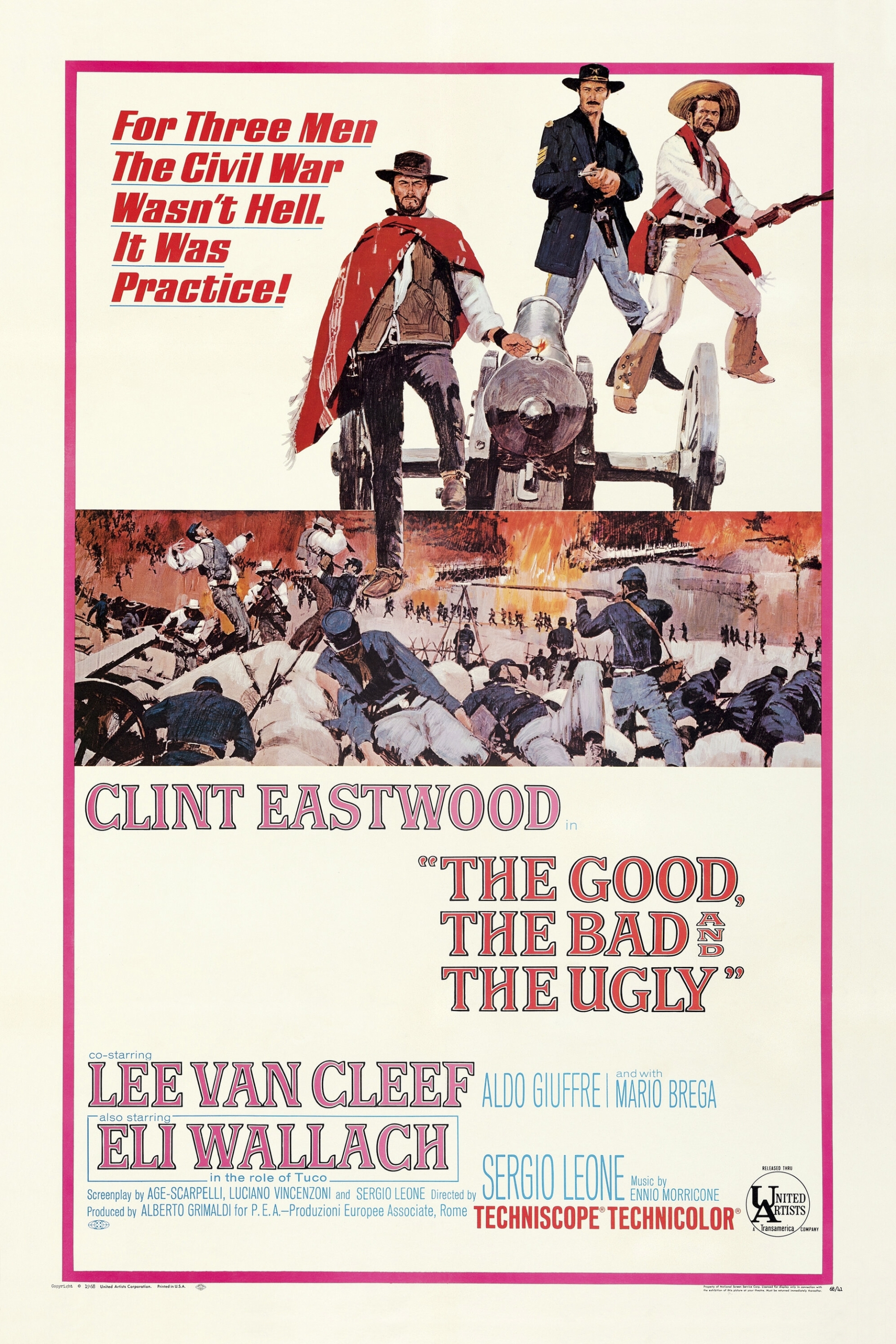 |
| Photo: IMDb |
The Good, the Bad and the Ugly (Italian: Il buono, il brutto, il cattivo, literally "The good, the ugly, the bad") is a 1966 Italian epic spaghetti Western film directed by Sergio Leone and starring Clint Eastwood as "the Good", Lee Van Cleef as "the Bad", and Eli Wallach as "the Ugly". Its screenplay was written by Age & Scarpelli, Luciano Vincenzoni, and Leone (with additional screenplay material and dialogue provided by an uncredited Sergio Donati), based on a story by Vincenzoni and Leone. Director of photography Tonino Delli Colli was responsible for the film's sweeping widescreen cinematography, and Ennio Morricone composed the film's score, including its main theme. It was an Italian-led production with co-producers in Spain, West Germany, and the United States. Most of the filming took place in Spain.
The film is known for Leone's use of long shots and close-up cinematography, as well as his distinctive use of violence, tension, and highly stylised gunfights. The plot revolves around three gunslingers competing to find a fortune in a buried cache of Confederate gold amid the violent chaos of the American Civil War (specifically the Battle of Glorieta Pass of the New Mexico Campaign in 1862), while participating in many battles, confrontations, and duels along the way. The film was the third collaboration between Leone and Clint Eastwood, and the second with Lee Van Cleef.
The Good, the Bad and the Ugly was marketed as the third and final installment in the Dollars Trilogy, following A Fistful of Dollars and For a Few Dollars More. The film was a financial success, grossing over $38 million at the worldwide box office, and is credited with having catapulted Eastwood into stardom. Due to general disapproval of the spaghetti Western genre at the time, critical reception of the film following its release was mixed, but it gained critical acclaim in later years, becoming known as the "definitive spaghetti Western".
16. The Matrix (1999)
The Matrix is a 1999 science fiction action film written and directed by the Wachowskis. It is the first installment in The Matrix film series, starring Keanu Reeves, Laurence Fishburne, Carrie-Anne Moss, Hugo Weaving, and Joe Pantoliano. It depicts a dystopian future in which humanity is unknowingly trapped inside a simulated reality, the Matrix, which intelligent machines have created to distract humans while using their bodies as an energy source. When computer programmer Thomas Anderson, under the hacker alias "Neo", uncovers the truth, he joins a rebellion against the machines along with other people who have been freed from the Matrix.
The Matrix is an example of the cyberpunk subgenre of science fiction. The Wachowskis' approach to action scenes was influenced by Japanese animation and martial arts films, and the film's use of fight choreographers and wire fu techniques from Hong Kong action cinema influenced subsequent Hollywood action film productions. The film popularized a visual effect known as "bullet time", in which the heightened perception of certain characters is represented by allowing the action within a shot to progress in slow-motion while the camera appears to move through the scene at normal speed, allowing the sped-up movements of certain characters to be perceived normally.
The Matrix opened in theaters in the United States on March 31, 1999 to widespread acclaim from critics, who praised its innovative visual effects, action sequences, cinematography and entertainment value, and was a massive success at the box office, grossing over $460 million on a $63 million budget, becoming the highest-grossing Warner Bros. film of 1999 and the fourth highest-grossing film of that year. At the 72nd Academy Awards, the film won all four categories it was nominated for, Best Visual Effects, Best Film Editing, Best Sound, and Best Sound Editing. The film was also the recipient of numerous other accolades, including Best Sound and Best Special Visual Effects at the 53rd British Academy Film Awards, and the Wachowskis were awarded Best Director and Best Science Fiction Film at the 26th Saturn Awards. The film is considered to be among the greatest science fiction films of all time, and in 2012, the film was selected for preservation in the United States National Film Registry by the Library of Congress for being "culturally, historically, and aesthetically significant."
17. Goodfellas (1990)
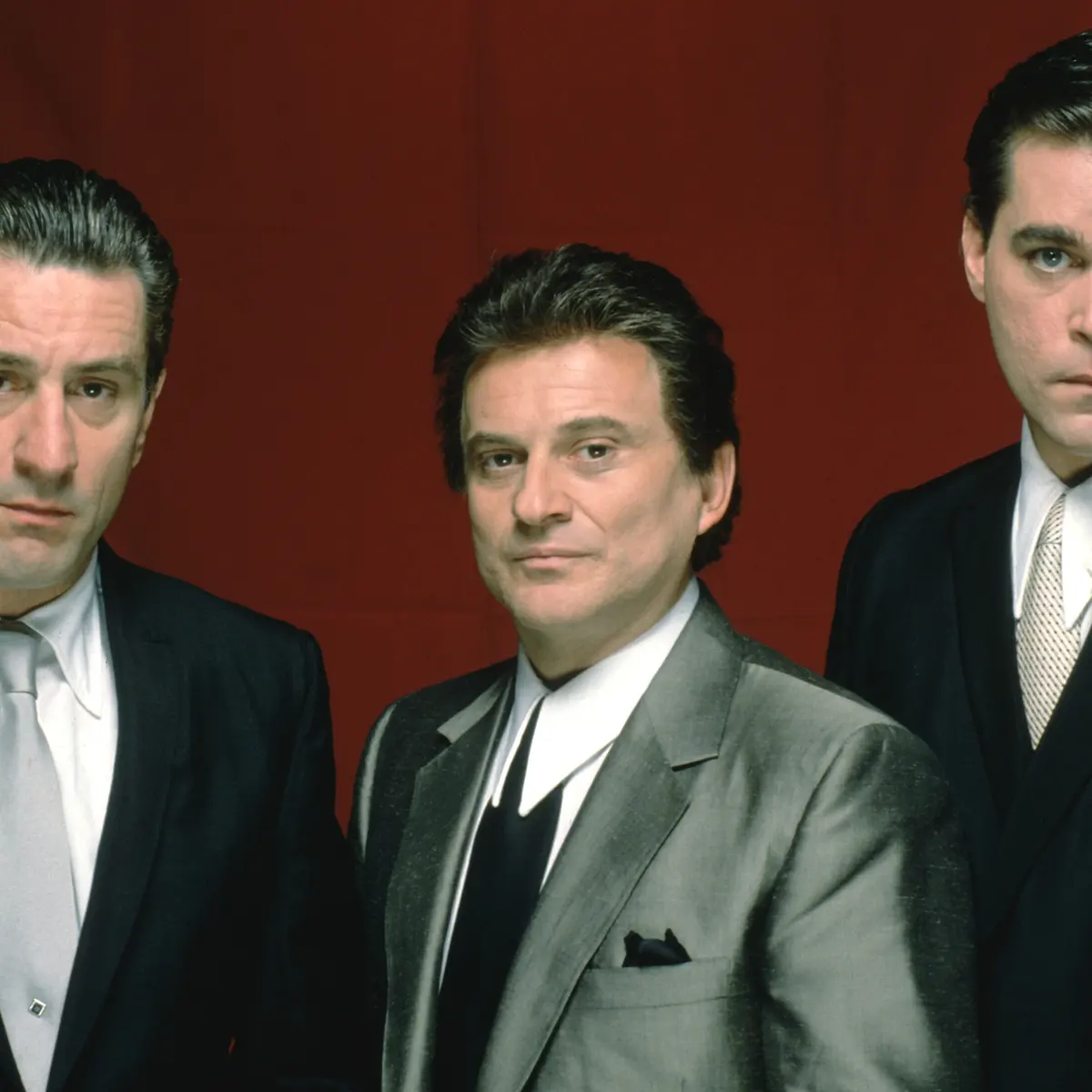 |
| Robert De Niro, Joe Pesci and Ray Liotta in Goodfellas, a film that features some of Scorsese’s most seductive film-making. Photograph: Allstar/Warner Bros/Sportsphoto |
Goodfellas (stylized GoodFellas) is a 1990 American biographical crime drama film directed by Martin Scorsese, written by Nicholas Pileggi and Scorsese, and produced by Irwin Winkler. It is a film adaptation of the 1985 nonfiction book Wiseguy by Pileggi. Starring Robert De Niro, Ray Liotta, Joe Pesci, Lorraine Bracco and Paul Sorvino, the film narrates the rise and fall of mob associate Henry Hill and his friends and family from 1955 to 1980.
Scorsese initially titled the film Wise Guy and postponed making it; he and Pileggi later changed the title to Goodfellas. To prepare for their roles in the film, De Niro, Pesci and Liotta often spoke with Pileggi, who shared research material left over from writing the book. According to Pesci, improvisation and ad-libbing came out of rehearsals wherein Scorsese gave the actors freedom to do whatever they wanted. The director made transcripts of these sessions, took the lines he liked most and put them into a revised script, which the cast worked from during principal photography.
Goodfellas premiered at the 47th Venice International Film Festival on September 9, 1990, where Scorsese was awarded with Silver Lion for Best Director, and was released in the United States on September 19, 1990, by Warner Bros. The film was made on a budget of $25 million, and grossed $47 million. Goodfellas received widespread critical acclaim upon release: the critical consensus on Rotten Tomatoes calls it "arguably the high point of Martin Scorsese's career". The film was nominated for six Academy Awards, including Best Picture and Best Director, with Pesci winning for Best Supporting Actor. The film won five awards from the British Academy of Film and Television Arts, including Best Film and Best Director. Additionally, Goodfellas was named the year's best film by various critics' groups.
Goodfellas is widely regarded as one of the greatest films ever made, particularly in the gangster genre. In 2000, it was deemed "culturally, historically, or aesthetically significant" and selected for preservation in the National Film Registry by the United States Library of Congress. Its content and style have been emulated in numerous other films and television series.
18. Star Wars: Episode V - The Empire Strikes Back (1980)
The Empire Strikes Back (also known as Star Wars: Episode V – The Empire Strikes Back) is a 1980 American epic space opera film directed by Irvin Kershner, with a screenplay by Leigh Brackett and Lawrence Kasdan, based on a story by George Lucas. The sequel to Star Wars (1977), it is the second film in the Star Wars film series and the fifth chronological chapter of the "Skywalker Saga". Set three years after the events of Star Wars, the film recounts the battle between the malevolent Galactic Empire, led by the Emperor, and the Rebel Alliance, led by Princess Leia. Luke Skywalker trains to master the Force so he can confront the powerful Sith lord, Darth Vader. The ensemble cast includes Mark Hamill, Harrison Ford, Carrie Fisher, Billy Dee Williams, Anthony Daniels, David Prowse, Kenny Baker, Peter Mayhew, and Frank Oz.
Following the success of Star Wars, Lucas hired Brackett to write the sequel. Following her death in 1978, he outlined the whole Star Wars saga and wrote the next draft himself, before hiring Raiders of the Lost Ark (1981) writer Kasdan to enhance his work. To avoid the stress he faced directing Star Wars, Lucas handed this responsibility to Kershner and focused on expanding his special effects company Industrial Light & Magic instead. Filmed from March to September 1979 in Finse, Norway, and at Elstree Studios in England, The Empire Strikes Back faced production difficulties, including actor injuries, illnesses, fires, and problems securing additional financing as costs rose. Initially budgeted at $8 million, costs had risen to $30.5 million by the project's conclusion.
Released on May 21, 1980, the highly anticipated sequel became the highest-grossing film that year, earning approximately $401.5 million worldwide. Unlike its predecessor, Empire was met with mixed reviews from critics and fans conflicted over its darker and more mature themes compared to the light-hearted adventure of Star Wars. Critics praised the puppeteered character Yoda, a diminutive alien who serves as Luke's teacher, for having expressive features and characterization. The film was nominated for various awards and won two Academy Awards, two Grammy Awards, and a BAFTA, among others. Subsequent releases have raised the film's worldwide gross to $538–549 million and, adjusted for inflation, it is the thirteenth-highest-grossing film in the United States and Canada.
19. One Flew Over the Cuckoo's Nest (1975)
One Flew Over the Cuckoo's Nest is a 1975 American psychological comedy drama film directed by Miloš Forman, based on the 1962 novel of the same name by Ken Kesey. The film stars Jack Nicholson as Randle McMurphy, a new patient at a mental institution, and features a supporting cast of Louise Fletcher, Will Sampson, Danny DeVito, Sydney Lassick, William Redfield, as well as Christopher Lloyd and Brad Dourif in their film debuts.
Filming began in January 1975 and lasted three months, taking place on location in Salem, Oregon, and the surrounding area, as well as Depoe Bay on the north Oregon coast. The producers decided to shoot the film in the Oregon State Hospital, an actual mental hospital, as this was also the setting of the novel. The hospital still functions (as of 2022), though the original buildings seen in the film have been demolished.
Considered by many to be one of the greatest films ever made, One Flew Over the Cuckoo's Nest is No. 33 on the American Film Institute's 100 Years... 100 Movies list.
The film was the second to win all five major Academy Awards (Best Picture, Actor in Lead Role, Actress in Lead Role, Director, and Screenplay) following It Happened One Night in 1934, an accomplishment not repeated until 1991 with The Silence of the Lambs. It also won numerous Golden Globe and BAFTA Awards. In 1993, the film was deemed "culturally, historically, or aesthetically significant" by the United States Library of Congress, and selected for preservation in the National Film Registry.
20. Interstellar (2014)
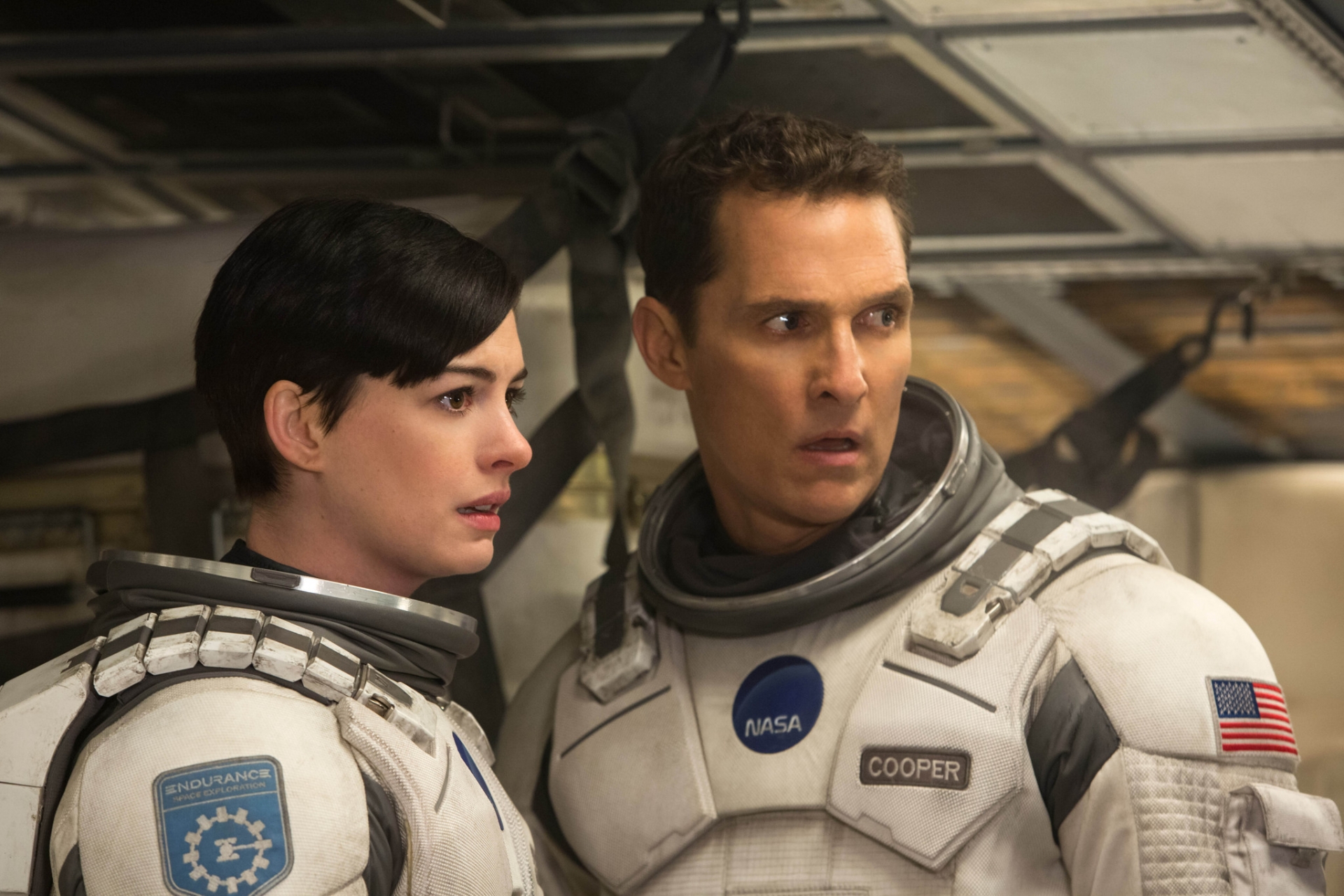 |
| Photo: IMDb |
Interstellar is a 2014 epic science fiction film co-written, directed and produced by Christopher Nolan. It stars Matthew McConaughey, Anne Hathaway, Jessica Chastain, Bill Irwin, Ellen Burstyn, Matt Damon, and Michael Caine. Set in a dystopian future where humanity is struggling to survive, the film follows a group of astronauts who travel through a wormhole near Saturn in search of a new home for mankind.
Brothers Christopher and Jonathan Nolan wrote the screenplay, which had its origins in a script Jonathan developed in 2007. Christopher produced Interstellar with his wife, Emma Thomas, through their production company Syncopy, and with Lynda Obst through Lynda Obst Productions. Caltech theoretical physicist and 2017 Nobel laureate in Physics Kip Thorne was an executive producer, acted as scientific consultant, and wrote a tie-in book, The Science of Interstellar. Paramount Pictures, Warner Bros. Pictures, and Legendary Pictures co-financed the film. Cinematographer Hoyte van Hoytema shot it on 35 mm in the Panavision anamorphic format and IMAX 70 mm. Principal photography began in late 2013 and took place in Alberta, Iceland and Los Angeles. Interstellar uses extensive practical and miniature effects and the company Double Negative created additional digital effects.
Interstellar premiered on October 26, 2014, in Los Angeles, California. In the United States, it was first released on film stock, expanding to venues using digital projectors. The film had a worldwide gross of over $677 million (and $701 million with subsequent re-releases), making it the tenth-highest-grossing film of 2014. It received positive reviews for its screenplay, direction, themes, visual effects, musical score, acting, and ambition. It has also received praise from many in the science community for its scientific accuracy and portrayal of theoretical astrophysics. Interstellar was nominated for five awards at the 87th Academy Awards, winning Best Visual Effects, and received numerous accolades.
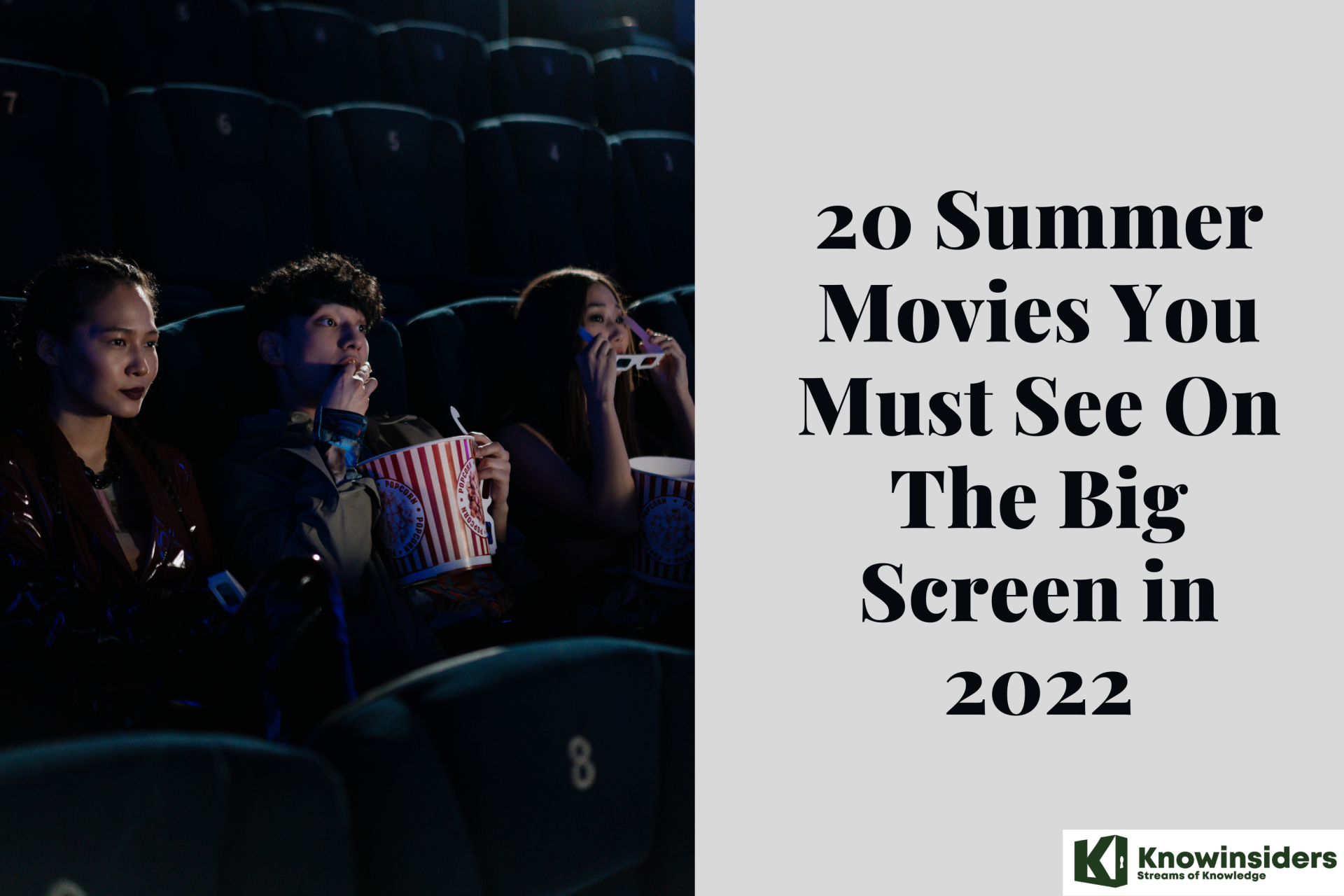 Top 20 Best Summer Movies You Must See On The Big Screen Top 20 Best Summer Movies You Must See On The Big Screen This summer movie season is all about catching up. Here’s our list of the biggest releases of this summer, as well as some of the ... |
 Top 200+ Best New Movies in May 2022 in Netflix, HBO, Amazon Prime, Hulu, Disney+, Paramount+ Top 200+ Best New Movies in May 2022 in Netflix, HBO, Amazon Prime, Hulu, Disney+, Paramount+ Find out the Top 200+ and Full List of the Best New Movies in May 2022 that coming out in Netflix, HBO, Amazon Prime, Hulu, ... |
 Top 20+ Best and High-Paying Jobs in the Future Top 20+ Best and High-Paying Jobs in the Future Here is the list of 20 emerging careers that are set to be the best and most high-paying in the near future! |
 Top 20+ Best Free Websites to Sell Stuff Online Anywhere in The World Top 20+ Best Free Websites to Sell Stuff Online Anywhere in The World It is much easier for you to make a living from your online ventures now. To help you start selling straight away, we’ve created this ... |


























